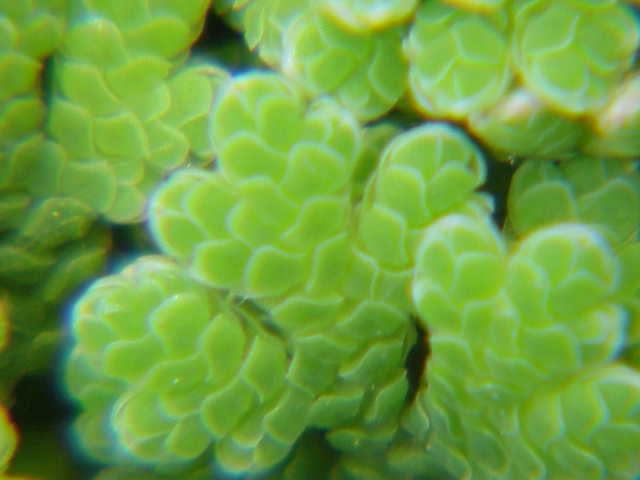Mosquito Fern, Water Fern, Fairy Moss, Duckweed Fern
Azolla filiculoides

🌿 Morphology
🌞 Growing conditions
🌍 Origin and family
🌾 Uses
Warning: Despite the care taken in writing this sheet, it is essential to cross-reference sources before using or consuming any plant. When in doubt, consult a qualified professional
Permaculture uses
Azolla filiculoides is an excellent nitrogen fixer, drawing nitrogen from the air and converting it into a form usable by plants. It can be used as a green manure, compost ingredient, or animal feed (especially for ducks and chickens). It also suppresses weed growth and helps retain soil moisture. It is used in rice paddies as a biofertilizer, reducing the need for synthetic fertilizers. Certain strains are more efficient at nitrogen fixation than others.
Permapeople description
A fern which captures carbon dioxide and nitrogen from the air. 6 tons of athmospheric carbon per acre per year.
Botanical description
Azolla filiculoides is a small, aquatic fern that floats on the surface of still or slow-moving water. It consists of small, overlapping leaves, typically 1-2 cm long. The leaves are bilobed, with an upper lobe containing a symbiotic relationship with the cyanobacterium Anabaena azollae, which fixes atmospheric nitrogen. The lower lobe is submerged and serves as a root-like structure. Azolla reproduces vegetatively through fragmentation, but also sexually via sporocarps (small reproductive structures). Its color ranges from green to reddish-brown depending on environmental conditions. It can form dense mats that cover the water surface.
Companion planting
Azolla is commonly used in rice paddies as a companion plant. It provides nitrogen to the rice plants and suppresses weed growth. It can also be used as a companion plant in other aquatic or semi-aquatic systems. Its dense growth may potentially inhibit the growth of some smaller aquatic plants by blocking sunlight.
Propagation methods
Azolla is primarily propagated vegetatively through fragmentation. Small pieces of the fern will quickly multiply and spread across the water surface. It can also be grown from spores, but this is less common in practice.
History and traditions
Azolla has a long history of use in Asian agriculture, particularly in rice cultivation. It has been used for centuries in China and Vietnam as a green manure and biofertilizer. Traditional uses also include livestock feed. There is increasing interest in Azolla's potential for biofuel production and wastewater treatment.
Usage calendar
Azolla grows most actively during warmer months (spring, summer, and early fall) when temperatures are favorable. It may become dormant or die back during colder winter months depending on the climate. Optimal growth occurs in temperatures between 20-30°C (68-86°F). It can be harvested throughout the growing season. Planting is best done in the spring or early summer.
